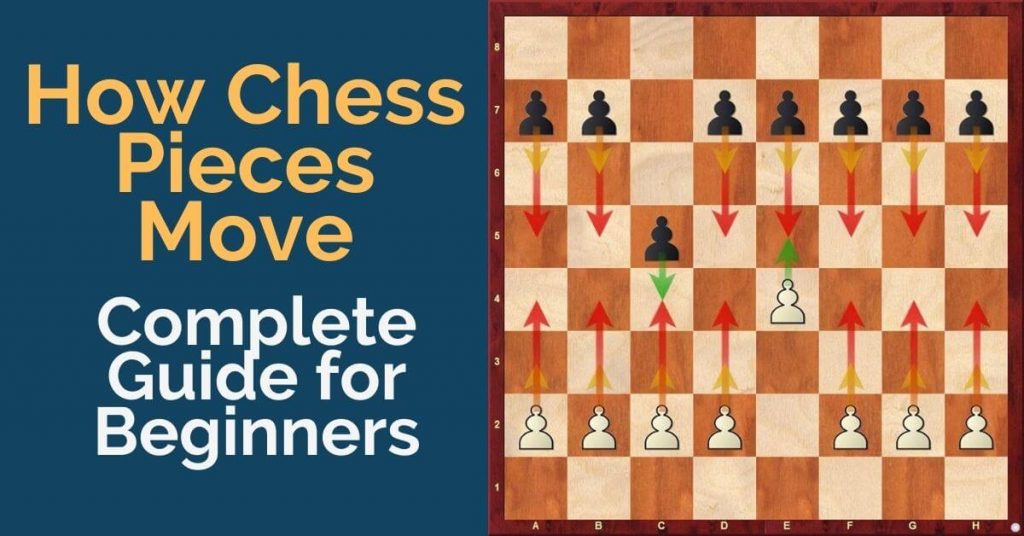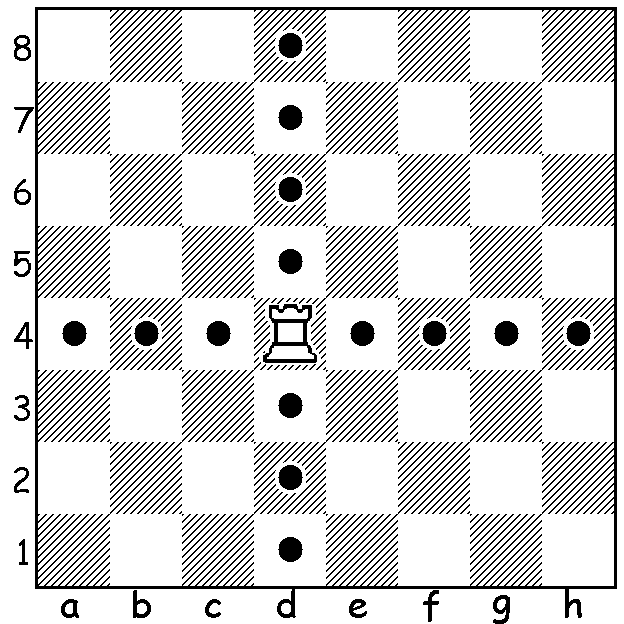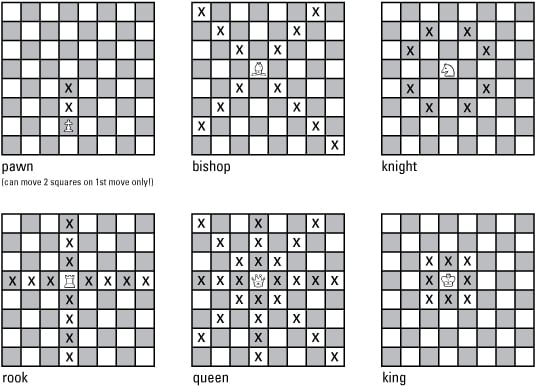

#King moves in chess how to
For more information, see the guide on how to set up a Chess board.Įach player must make a move and a move cannot be skipped either. Notice that the Queens are placed on their own corresponding color next to the Kings on the center files.

Each player starts with 1 King, 1 Queen, 2 Rooks, 2 Bishops, 2 Knights and 8 pawns. Each play takes turns making one move with the player with the White pieces moves first.Įach game starts in the position shown in the example below. Starting Position RulesĬhess is one of the greatest games to have ever existed and is played by hundreds of millions of people all around the world.Ĭhess is a game where two opponents play against each other on an 8×8 checkered board with a light square in each player’s lower right corner. The first section of rules is on the starting position of the game.
#King moves in chess pdf
If you want to go straight to the official FIDE Chess rules, they have a PDF of the Laws of Chess you can go over and download if you wish. This is common in simple endgames but very rare in middlegames, where the king can be in severe danger if he steps into the middle of the board.FIDE is the World Chess Federation and defines the rules of Chess. While the king can not deliver a check itself, the king can be a supporting attack piece. Can the king attack in chess?ĭespite its limited movement and range, the king in chess can actually attack. A popular theory is that the king acts like the leader in a battle, so he must stay behind and move slowly and cautiously to stay safe and be able to direct the forces and coordinate the battle.Īnother theory suggests that the king’s movement has been intentionally restricted so it becomes weaker as it would be incredibly difficult to checkmate a king that can easily escape or defend itself, which would’ve made the game even more difficult than it already is.

There are a few theories as to why the king may only move one square per turn. Why can the king move only one square per turn? A king in check can move or block the check. A check is not a condition for the king to be able to move, but if the king is in check, something must be done about it, and no other moves can be played. Yes, the king can move when they are not in check. It also must be the first move for both the king and the rook for castling to be legal.Ĭan a king move in chess without a check? The king can not normally move two spaces, but it may only move two spaces to either side during castling, assuming that the king is not under check and neither are the two squares the king is going to travel. If you put this position as white to play, the engine will always be able to draw the game, while if you play it as black to move, the engine will always win as white.įAQs on the king in chess Can the king move two spaces? Go ahead and play it on your board and try to see all possibilities, or play it with an engine. Similar to direct opposition, whoever has the move here is at a disadvantage because the other side will be able to gain the direct opposition easily. Now, let’s look at what distant opposition looks like: If it’s white’s turn, the king will simply step into f7 and later will promote their pawn, but if it’s black’s turn, they can play Ke8, gain the direct opposition, and block the path of the white pawn to promotion. Unlike direct opposition, whoever has the move here is at an advantage.

Here is an example of a diagonal opposition. To make things simple: Both diagonal and distant oppositions are forms of opposition that will eventually lead to direct opposition however, knowing their patterns early can help you gain the direct opposition more easily with tricks like triangulation or wasting moves. The kind of opposition we have discussed so far is direct opposition, which is the basic form of opposition, but there are two other types of opposition you should know about, which are diagonal and distant opposition. In both cases, white will control the f8 square and be able to push their pawn to the f8 square to promote it. If black plays Kg8, white will respond with Ke7, and if black plays Ke8 instead, white will respond with Kg7. However, if it’s black’s turn, they are going to lose. If it’s the white’s turn, they have to move, and the black side will simply follow them and keep the opposition, forcing a draw as they will keep successfully blocking the white pawn. In this position, whoever has the move is at a disadvantage.


 0 kommentar(er)
0 kommentar(er)
